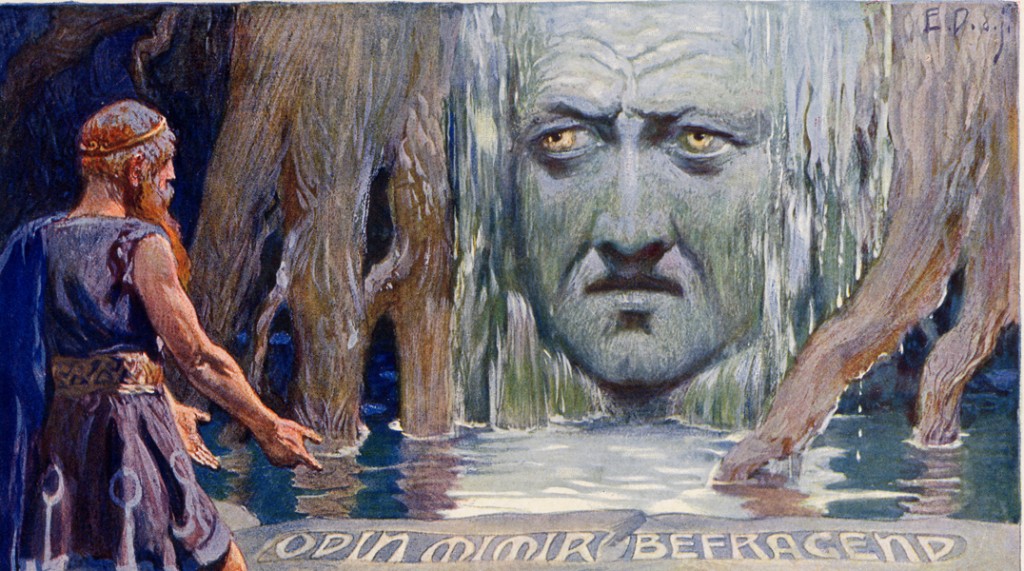Mælir Óðinn við Míms höfuð
Odin speaks with Mímir’s head
by Peter Krüger
©2013
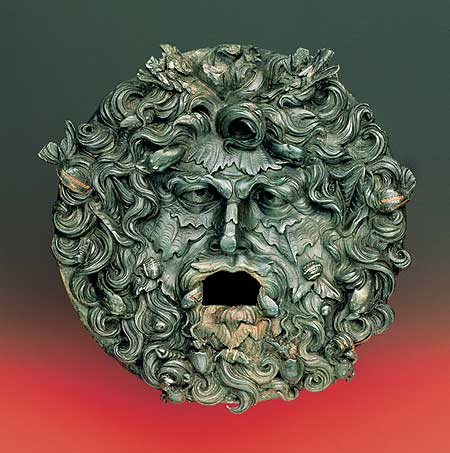
Fountain mask from Schambach-Treuchtlingen, Germany
[Germanic Astronomy] [Völuspá: A Star Guide]
The various references to Mímir in Völuspá have led to many speculations. On one hand, Mímir drinks mead from Valfather's pledge, on the other, Odin is said to speak with Mímir's head as mentioned in Völuspá 45:
Leika Míms synir
en mjötuðr kyndiz
at enu galla
Gjallarhorni;
hátt blæss Heimdallar,
horn er á lopti,
mælir Óðinn
við Míms höfuð.
Mimir's sons
play,
while fate is kindled
by the blaring
Gjjallerhorn:
Heimdall blows loud,
his horn aloft,
Odin speaks
with Mimir's head.
Even it is not explicitly stated, this head is normally assumed to be the
severed head of Mímir as described in a story preserved in the Heimskringla,
Ynglingasaga 4:
“En er Hœnir kom í
Vanaheim, þá var hann þegar höfðingi gerr; Mímir kendi honum ráð
öll. En er Hœnir var staddr á þingum eða stefnum, svá at Mímir
var eigi nær, ok kœmi nökkur vandamál fyrir hann, þá svaraði
hann æ hinu sama: ráði aðrir, sagði hann. Þá grunaði Vani, at
Æsir mundi hafa falsat þá í mannaskiptinu; þá tóku þeir Mími ok
hálshjoggu ok sendu höfuðit Ásum. Óðinn tók höfuðit ok smurði
urtum, þeim er eigi mátti fúna, ok kvað þar yfir galdra, ok
magnaði svá, at þat mælti við hann ok sagði honum marga leynda
hluti.”
“Now, when Hoenir
came to Vanaheim he was immediately made a chief, and Mimir came
to him with good counsel on all occasions. But when Hone stood
in the Things or other meetings, if Mimir was not near him, and
any difficult matter was laid before him, he always answered in
one way -- "Now let others give their advice"; so that the
Vanaland people got a suspicion that the Asaland people had
deceived them in the exchange of men. They took Mime, therefore,
and beheaded him, and sent his head to the Asaland people. Odin
took the head, smeared it with herbs so that it should not rot,
and sang incantations over it. Thereby he gave it the power that
it spoke to him, and discovered to him many secrets.”
I have previously shown several possible connections between eddic tales and ancient star lore from Greek and Sumerian sources. Is it also possible to get new insights into the tale of Mímir’s head using an astronomical approach? If this is the case than we should find a severed head on ancient celestial globes and sky maps . And indeed, we do not have to search for it long. On every Greek sky map we find the hero Perseus holding the severed head of Medusa in his left hand.
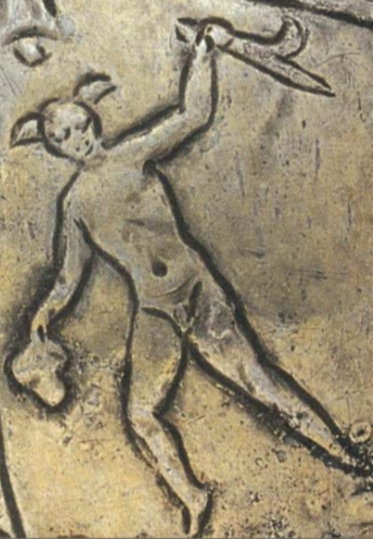 |
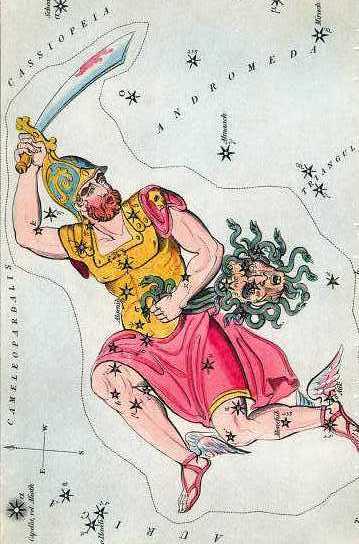 |
The story of Perseus and Medusa we find recorded by Hesiod. King Polydektes of Seriphos commanded the young hero Perseus to fetch the head of Medusa the Gorgon, whose glance could turn men to stone. Perseus accomplished this with the help of the gods who equipped him with a reflective shield, a curved sword, winged boots and a helm of invisibility. When he fell upon Medusa and decapitated her, two creatures sprang forth from the wound - the winged horse Pegasus and the giant Khrysaor. Perseus fled with the monster's head in a sack, and with her two angry sisters following close upon his heels.
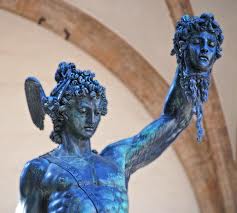 |
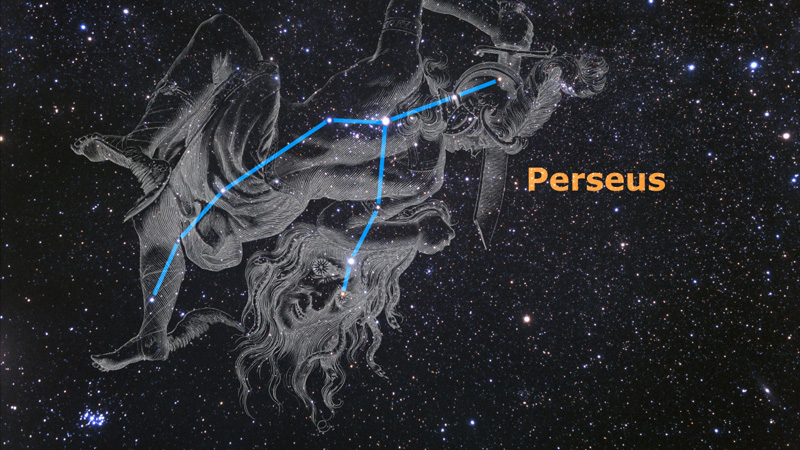 |
Unfortunately the story of Perseus and Medusa seems to be totally unrelated to the story of Odin and Mimir’s head. Are we on the wrong track? Well, at least it’s very interesting to compare the iconography of Perseus with a description of Hroftr (a byname of Odin) and Mímir’s head that we find in two stanzas of Sigrdrífumál 13-14:
|
Hugrúnar skaltu kunna, |
13. Mind-runes you must know If you want to be Wiser in spirit than every other man; Hropt interpreted them, Cut them, thought them out, Out of the liquid that leaked Out of the head of Heiðdraupnir, And out of the horn of Hoddrofnir. |
|
Á bjargi stóð |
14. On the
mountain he stood with Brimir's sword, On his head the helm he bore; Then spoke Mimir’s head, Wisely from the first word And said true staves. |
Normally we would expect Odin to hold his spear Gungnir in his hand but in this stanza he holds a sword (Brimis eggjar) and is wearing a helmet just as Perseus. He stands on a mountain (bjargi) and indeed the constellation of Perseus is in the very north of the celestial globe. The bjargi might be therefore related to the Himinbjörg of the northern cosmology.
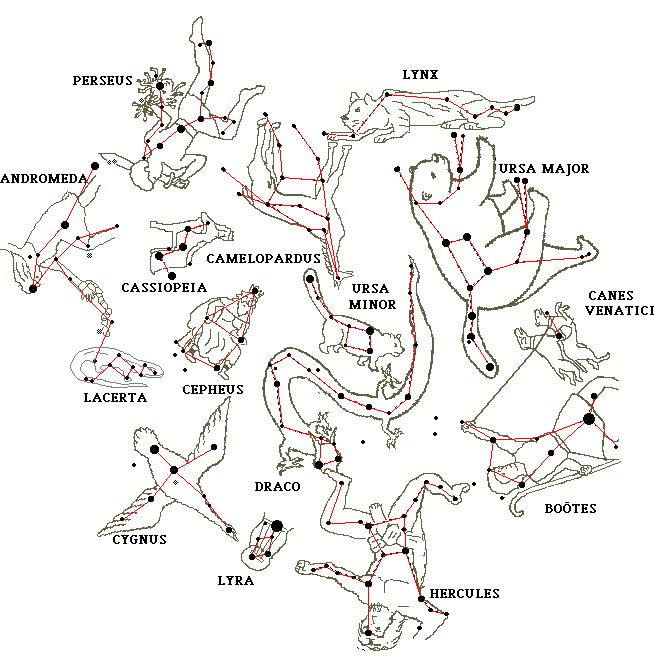 |
I have come to the conclusion that Mímir’s head and Mímir with his fountain are depicted in different constellations. While Mímir’s head seems to be connected to Caput Medusa (Head of Medusa) of the constellation Perseus, Mímir and the Mímisbrunnr refer to the constellation of Aquarius and Piscis Austrinus, the Southern Fish and Hoddmímis holt to the Pegasus square.
